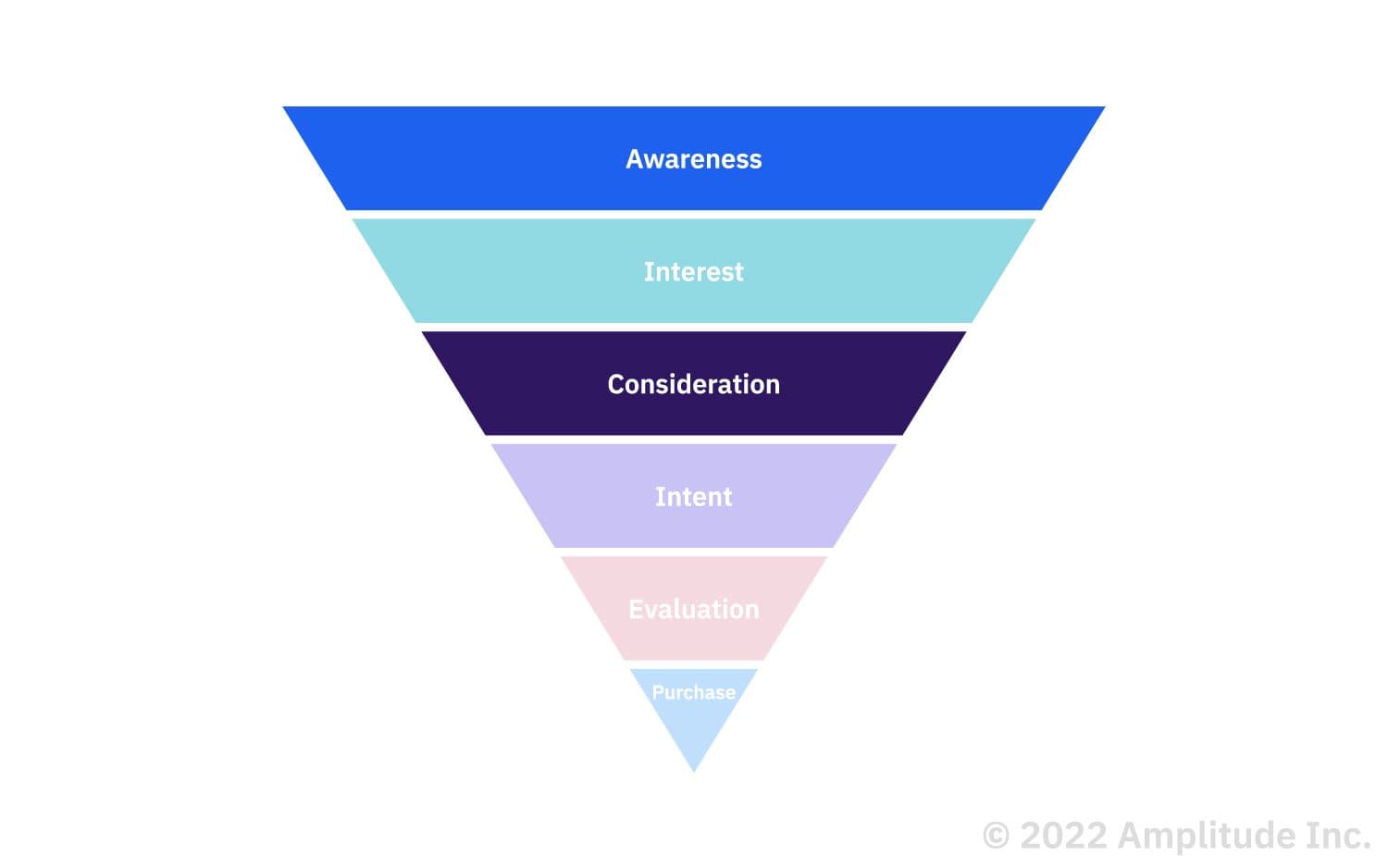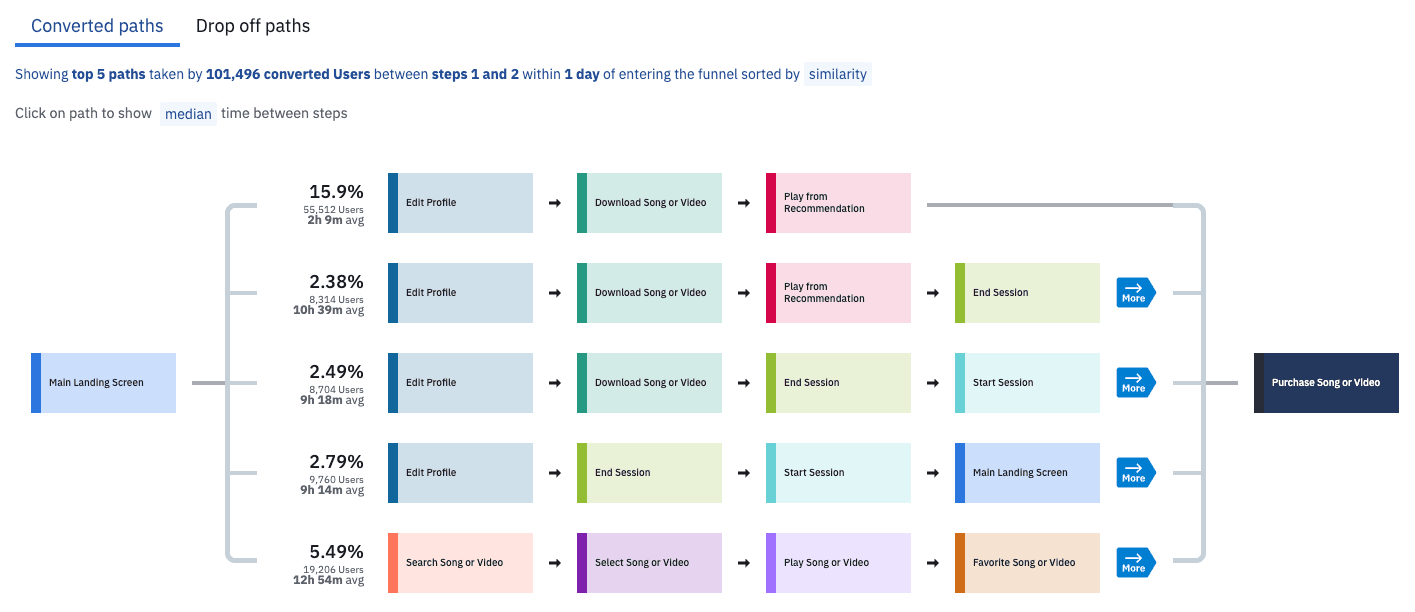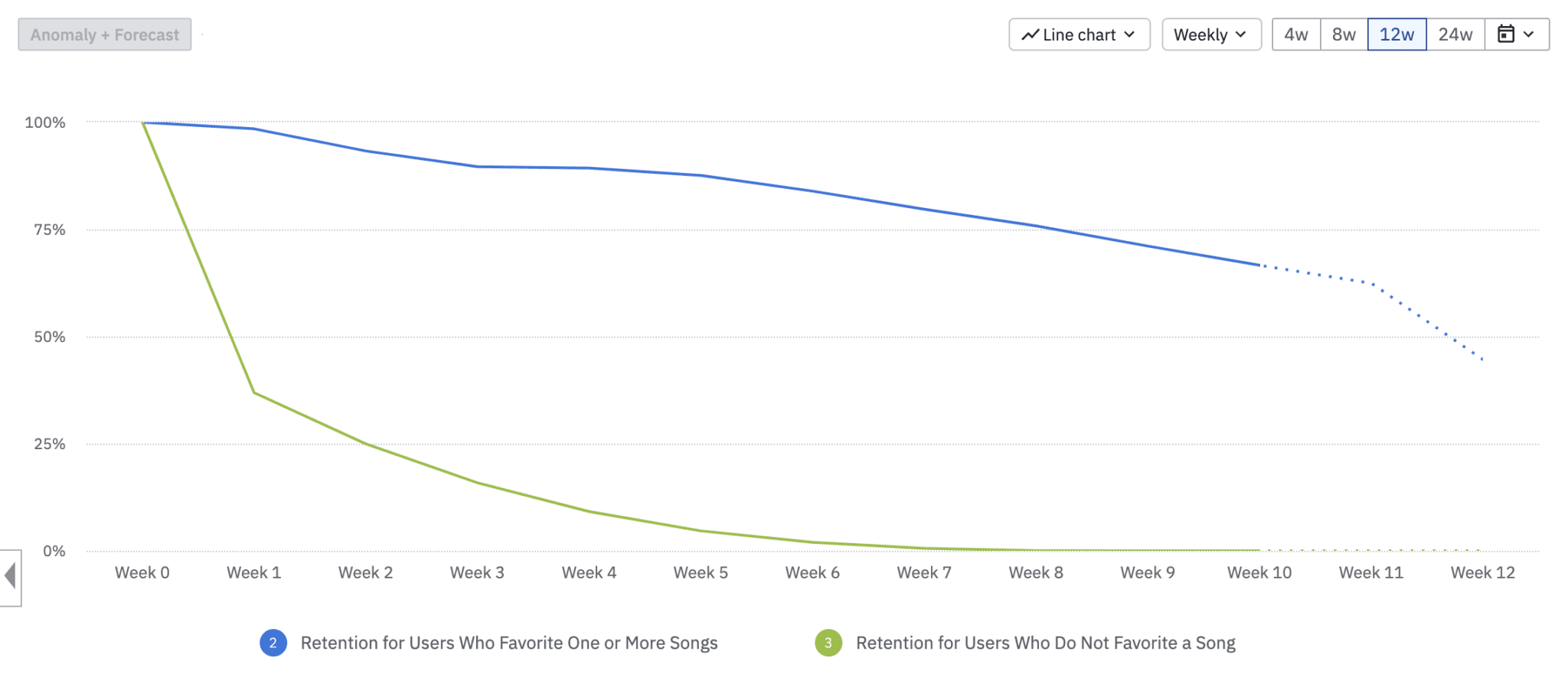How to Analyze a Marketing Sales Funnel
Learn how a marketing sales funnel analyzes the steps a customer takes from first learning about your product to purchasing it.
A marketing sales funnel is a tool to identify where customers are in their journey and learn how they interact with your product at each stage.
A successful customer journey involves a carefully considered, step-by-step process. You need to identify which tools and resources will be beneficial—and in marketing and sales, funnels have proven invaluable. They provide teams with analytics and automation, helping them identify where prospects and customers are in their discovery process and how likely they are to find value in your product or service.
When it comes to marketing, qualified leads are determined based on a threshold of engagement—whereas in sales, they reflect an assessment of interest and fit. The commonality is that in both cases, a business looks at which actions customers take within their marketing sales funnel.
While the exact steps of a funnel vary based on the industry or type of product, all funnels start with awareness, then stimulate interest and desire, and end with prompting action.
Key takeaways
- If you construct funnels with intentional, data-driven frameworks, you can see an increase in sales and conversions.
- The different stages of a funnel require different types of content and engagement.
- Effective funnels present messaging that is relevant, consistent, and engaging.
- You can use funnels and product analytics to identify optimization opportunities, creating more value for your customers and improving acquisition and retention for your business.
- Similarly, you can use funnels to reduce churn by identifying where customers are losing interest in your product.
- The customer journey isn’t necessarily linear, nor are funnels—users may drop off and re-enter at different stages.
What is a marketing funnel?
A marketing funnel is a visual tool to outline the steps a customer takes from first learning about your product to purchasing. It anticipates a customer’s behavior by breaking down every interaction with your company into stages.
Marketing funnels help you better understand your customer needs and the discovery process that brings them to your business. The data generated by this process gives you insight into your user behavior, which you can use to optimize your sales, marketing, and product strategies.
Most of us are likely in multiple marketing funnels, at various stages, at any given time. For example, if Google took you to a company’s landing page, you’re in the awareness stage. And if you’ve ever received an email after you abandoned a cart at checkout, you’ve bounced out of the bottom of the funnel—and the email is the company’s attempt to win you back.
Marketing sales funnel stages
The different stages of a marketing sales funnel can provide a framework that informs the content created by marketers and the level of outreach by sales. Conducting sales funnel analysis with a well-constructed marketing sales funnel will help you generate higher-quality customers whose needs match your product, while minimizing the number of lost leads.
Analyzing your marketing sales funnel will better equip sales to anticipate customer needs, reduce friction, and influence purchasing decisions. Meanwhile, marketers can adjust their marketing strategies to ensure they reach and resonate with the right people.
Marketing sales funnels consist of:
- Awareness: The customer learns of your brand or product for the first time.
- Interest: Your product presents a solution to the problem the customer hopes to solve.
- Consideration: The customer weighs your solution against your competitors’ offerings.
- Intent: After identifying your solution as the best option, the customer begins the process of purchasing your product.
- Evaluation: The customer makes final due-diligence decisions about purchasing your product.
- Purchase: The customer commits to using your product to solve their problem—the goal of any marketing sales funnel.

Marketing sales funnel stages
Customers will move through the six stages of your marketing sales funnel at varying rates, and their progression isn’t always linear. The pace at which they move through the funnel depends on the urgency, severity, or complexity of the problem they are trying to solve.
Marketing strategies for different funnel stages
Customer mindsets and behaviors are unique to each funnel stage, so it’s important to tailor your marketing strategy to each of these touchpoints.
- In the awareness stage, organic content (e.g., SEO blog posts) or paid media (e.g., Google search ads or Facebook social ads) attracts customers who are curious and potentially in the market to buy. Marketing activities such as podcasts, billboards, influencer marketing, radio, and TV ads can create awareness for customers who aren’t actively considering purchasing.
- The right marketing tactics can also help potential customers move from captured interest to the evaluation stage. This can include creating content such as blog posts, case studies, explanatory videos, whitepapers, pricing guides, and product comparisons. Or it could include marketing activities like retargeted ads, email follow-up, and building a social media presence.
- When product signals such as “add to cart” indicate an imminent conversion, you need to get the user to the bottom of the funnel to make them a customer. The purchase stage requires site optimizations that reduce any perceived obstacles. Promotional offers can be useful here, such as introductory rates or money-back guarantees, as well as interactive tools such as trials, self-service or instructed demonstrations, phone or video calls, or in-person meetings.
Of course, a customer’s behavior is often more dynamic than simply moving through stages 1-6 in that order. The pathways to purchase can be indirect or circuitous—some funnels that temporarily “fail” may have planted the seed for later conversion.
How to identify where customers are in a marketing and sales funnel
Various forms of customer segmentation—technographic, customer behavior, needs-based, customer status, value-based—inform which funnel stage you initially put customers into. But how do you pinpoint their progress once they navigate content and take action? By analyzing your behavioral customer data, you can see what’s happening and respond, manually or automatically, in real time.
With Amplitude Journeys, you can see how people get from one stage of your marketing sales funnel to another. If you find a steep drop-off at a certain stage, you can examine what customers were doing to see where they might have gotten stuck or lost enthusiasm. These insights can help you create a customer journey strategy that expedites getting customers past deliberation and into the purchase stage.

A marketing sales funnel journey for a music-streaming app. Try it yourself in our free self-service demo.
Leveraging sales funnels for sustainable growth
Analyzing your marketing sales funnel can help you drive business growth through personalization and churn prevention.
Personalizing your funnel
As you’re casting a wide net in the hopes of garnering attention from a diverse group of potential customers, messaging at the top of the funnel is often broad. However, this doesn’t mean you can’t personalize it with the right tools.
For example, if a customer arrives at your website after clicking on a LinkedIn ad, you could present your website’s copy based on their industry or role. For customers at the middle or bottom of the funnel, you could personalize email campaigns based on the features they explore most during a trial to help increase free trial conversion.
Digital analytics tools like Amplitude Audiences enable you to deliver personalized marketing and product experiences. You can use cohort analysis to segment customers based on their traits and behaviors, then offer personalized recommendations based on their interests.
For example, Jumbo Interactive used personalization to increase conversion during the purchase stage. After customers made a purchase, they received a personalized email recommending a new item. This tactic and other personalization efforts led to a 120% increase in conversion.
Reducing churn
If you notice a steep drop-off within your funnel, you need to understand why. It might signify ineffective messaging, onboarding friction, or confusing website navigation—all issues that detract from growth.
Detecting and repairing your “leaky bucket” is key to retaining the customers you acquire at the top of your marketing sales funnel. To begin addressing the problem of users abandoning your product:
- Use churn rate cohort analysis to identify why customers churn based on their acquisition date, acquisition channel, or in-product behaviors.
- Use A/B testing to experiment with possible solutions. For example, perhaps you find users from LinkedIn ads land on a specific page and have higher retention. You could A/B test using this landing page for your Twitter and Facebook ads.
Reaching the end of your marketing sales funnel is just the beginning. It’s important to continue marketing to customers even after they purchase to boost loyalty and retention. Conduct a customer retention analysis to help you identify which customers are returning and how you can follow up with upsell and cross-sell opportunities to increase customer lifetime value. And if they aren’t returning, figure out why and what will entice them to come back.
For example, suppose you have a music-streaming app and look into the weekly retention for users who favorite a song versus those that don’t:

Amplitude’s Retention Analysis chart shows users who favorite a song in the app (blue) have higher retention than those who don’t (green). You could use this insight to create more content about the favorite song feature and promote it to users who haven’t favorited a song. This tactic might prompt them to return to your app, favorite a song, and reach a level of engagement they didn’t have before using the favorite song feature.
This is how a funnel becomes more of a cycle because a user who has exited the bottom of the funnel can re-enter based on their ability to see continued value in the product.
Marketing sales funnel plan examples
Marketing and sales teams need to find cost-effective ways to generate awareness, nurture interest, and encourage conversions. To do so, you need to build a relevant marketing sales funnel that you can easily analyze and optimize.
For example, a social media post could inspire a prospect to listen to an episode of your company’s podcast. They might then return to the website, explore helpful content on the blog, click over to the product, and ultimately convert. Alternatively, the blog could be the method of discovery, which is more likely to happen through SEO content ranking for organic keywords.
Here’s an example marketing sales funnel starting with users who came from a social media post and ending with them signing up for a product:

- The social media post may offer a glimpse of the community surrounding a product or service.
- The podcast might explore industry trends and create awareness about a solution to a pain point—but without much urgency.
- Blog content is an affordable way of beginning to build a funnel, but be mindful of the importance of SEO.
- After engaging with blog content, a user may feel inspired to visit the product page to conduct further research and, ultimately, sign up.
Having consistent messaging is essential to providing a unified customer experience across multiple digital channels. A blog post can build awareness of the options and explain why your company’s option fits best, which might inspire an email signup—but not an immediate purchase. Instead, you could launch an email that could lead to a conversation with sales or a request for a demo, then a purchase.
For subscription-based businesses, such as B2B SaaS companies, the marketing funnel could be as simple as:
- Visiting the website
- Signing up for a free trial
- Creating an account to access the free trial
- Upgrading to the paid version of the product after the free trial ends
It’s a similar route for products heavily reliant on consumer engagement, such as video games or productivity apps. Users view an ad for the product, which creates awareness. The user then signs up for the free version, explores the functionality of the product, and—convinced of its value—pays for the full product experience.
What marketing sales funnels can do for your business
Your product will evolve, markets will fluctuate, and consumers will engage with your product in new, potentially instructive ways. But patterns will always emerge through this turbulence, and having a reliable marketing sales funnel based on trustworthy data means you’ll be able to identify and act on them.
No matter how disparate each customer’s experience is, they all want to feel as if your brand’s messaging identifies and respects where they are in their journey. By learning how to effectively analyze a marketing sales funnel, you’ll be able to reach this level of personalization in your marketing strategy. And by recognizing the non-linear, flywheel aspects of the funnel, you’ll be able to quickly respond to any challenges your data uncovers.
To learn more about these flywheels, or product growth loops, download our Guide to Flywheels. Or start analyzing your marketing sales funnel today with a free Amplitude plan.
Resources
- What Is Funnel Analysis? Definition, Examples, and Tools (Blog Post)
- Build and Analyze a Funnel Analysis Chart (Video)
- Funnel Analysis and Its Use Cases (Live Session)

Austin Welborn
Former Senior Customer Success Manager, Amplitude
Austin is a former Customer Success Manager at Amplitude, where he worked with customers of all shapes and sizes to unlock the power of digital analytics and incorporate Amplitude into their day-to-day workflows. Having a background in advertising tech and product analytics, Austin enjoys helping customers connect the dots on their investment in digital.
More from Austin





